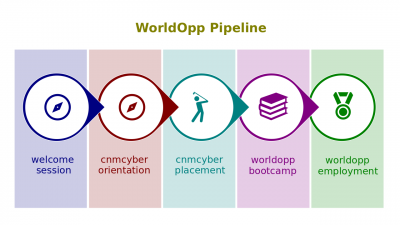Difference between revisions of "Labor Relations"
(→Script) |
(→Script) |
||
| Line 22: | Line 22: | ||
:This ''Act'' has granted [[employee]]s the right to organize into [[labor union]]s, to bargain collectively with ''employers'', and to define unfair labor practices by employers. | :This ''Act'' has granted [[employee]]s the right to organize into [[labor union]]s, to bargain collectively with ''employers'', and to define unfair labor practices by employers. | ||
| − | :Many ''employers'' perceive the ''labor unions'' as threats; some organize pseudo-unions under their own control. In the [[United States]], the percentage of workers belonging to | + | :Many ''employers'' perceive the ''labor unions'' as threats; some organize pseudo-unions under their own control. In the [[United States]], the percentage of workers belonging to ''labor unions'' is steadily declining over the last years, from about 20% forty years ago down to about 10% today. Regionally, the most of the unions are in the seven states, which are California, Illinois, New Jersey, New York, Ohio, Pennsylvania, and Washington. They mostly represent workers of the [[public sector]] of the [[economy]]. |
'''[[What Economy Is]]''' is the successor [[lectio]]. | '''[[What Economy Is]]''' is the successor [[lectio]]. | ||
==Quiz== | ==Quiz== | ||
Revision as of 00:40, 4 May 2020
Labor Relations (hereinafter, the Lectio) is the second lesson part of the Employment Essentials lesson that introduces its participants to employment and related topics.
This lesson belongs to the Introduction to Employment session of the CNM Cyber Orientation. The Orientation is the second stage of the WorldOpp Pipeline.
Contents
Content
The predecessor lectio is Employee Compensations.
Key terms
- Labor relations. The attitudes, motivations, and behaviors that two or more job-market actors assume toward each another, as well as the systematic study of those attitudes, motivations, and behaviors. In the United States, the Relations mostly refer to activities between employers and labor organizations concerning the negotiation or implementation of a collective bargaining agreement (CBA).
- Labor organization. Any organization of any kind, or any agency or employee representation committee or plan, in which employees participate and which exists for the purpose, in whole or in part, of dealing with employers concerning grievances, labor disputes, wages, rates of pay, hours of employment, or conditions of work.
- Labor union. An association of employees that represents a bargaining unit to negotiate, execute, and/or manage a collective bargaining agreement.
- Collective bargaining agreement (CBA). A written and signed document between an employer entity and a labor organization specifying the terms and conditions of employment for a specified period.
Script
- Labor relations may be defined as relations between parties of employment agreements. These relations include the attitudes, motivations, and behaviors that two or more actors on the job market assume toward each another.
- In the United States, labor relations have specific meaning. They refer to activities between employers and labor organizations concerning the negotiation or implementation of a collective bargaining agreement (CBA).
- The National Labor Relations Act defines a labor organization as,
Any organization of any kind, or any agency or employee representation committee or plan, in which employees participate and which exists for the purpose, in whole or in part, of dealing with employers concerning grievances, labor disputes, wages, rates of pay, hours of employment, or conditions of work.
- This Act has granted employees the right to organize into labor unions, to bargain collectively with employers, and to define unfair labor practices by employers.
- Many employers perceive the labor unions as threats; some organize pseudo-unions under their own control. In the United States, the percentage of workers belonging to labor unions is steadily declining over the last years, from about 20% forty years ago down to about 10% today. Regionally, the most of the unions are in the seven states, which are California, Illinois, New Jersey, New York, Ohio, Pennsylvania, and Washington. They mostly represent workers of the public sector of the economy.
What Economy Is is the successor lectio.
